|
|
Review GSM phone Motorola ROKR E2
Motorola ROKR E2. Live pictures
Motorola ROKR E2. Part I
Motorola ROKR E2. Part 2
Motorola ROKR E2. Part 3
Motorola ROKR E2. The last part
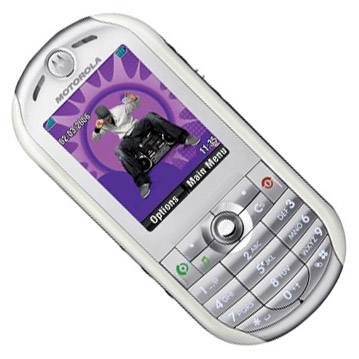
ROKR prehistory
The company of Motorola released its ROKR E1
in 2005, and many publishers endowed it with a title of the failure of the year quite fairly. In fact, the company changed
the body of a usual Motorola E398, applied white body color and added an iTunes player (which required a special button on the body). Software shipped with the model allowed to work with iTunes by Apple. However the reason why this model appeared is lack of time for launching other phones, their delay and uncertain fate. At first ROKR E1 was called Motorola E790; however like many other devices, it fell under the general concept of name change. Remember Motorola PEBL, which had an index of V6, was renamed to U6, and some other models also got new names. A curious fact is an expensive advertisement clip was recorded with Madonna, which was a considerable step in company's advertising. Actually there was no reason to advertise a primordially unsuccessful product, if only to declare collaboration with Apple and make it obvious. Those may have been some agreements between the companies.
Later on Motorola started producing models with iTunes-players as versions of ordinary handsets, for instance,
Motorola SLVR L7 is implemented both in usual manner and with iTunes. Actually this is a pure widening of the model line, which may be appropriate for iPod users. The intension is clear; however none of sensible iPod users will buy a weaker solution both as for musical component and little memory bank for storing tracks (today microSD cards are capacious of 512 MB). Remember that the majority of iPod customers was attracted by a great capacity of memory to store data, and certainly, by design. The iTunes service appeared secondary and supported the players' success. And now I hope you understand that skepticism regarding the launch of ROKR E1. Even more, the failure of the device was roused with unjustified expectations as customers were waiting for a device with a raisin, however it did not appear.
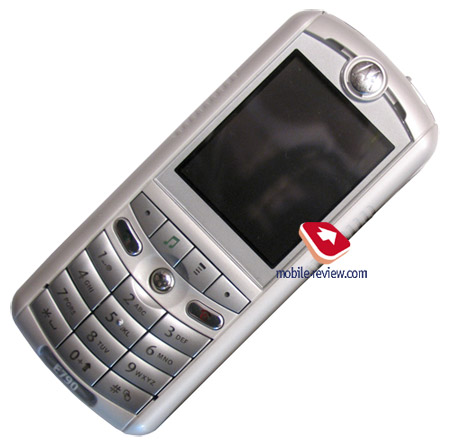
At the same time the company of Motorola became one of the first makers, who introduced a musical phone Motorola E398. Good sounding in a speakerphone mode was achieved with the help of two loudspeakers, and unique backlighting of these loudspeakers made the model a son of lumiere. It was extremely popular as the first such solution on the market and remains it till now due to low price and some evident advantages above rivals.
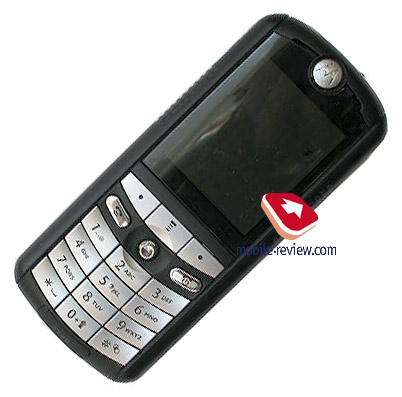
At the same time an innovation of musical phones became very popular on the market with the help of Sony Ericsson with
its Walkman trademark (inherited from Sony). Also the company of Nokia took the initiative and acted in its lovely manner - they
added player buttons to a smartphone. The solution happened very uninteresting and specific. Obviously the next phones will be
more interesting. While models equipped with hard drives are targeted at high-end segment and are not cheap. So now we face
Samsung i300 and in several months
Nokia N91 will appear. And Motorola had no serious rivals, while Sumatra was to make competition.
It was developed in the course of about two years and the release date was postponed constantly. Speaking frankly, we can rightfully call this model ROKR, while E1 is a forced addition to fill a gap in the company's product line.
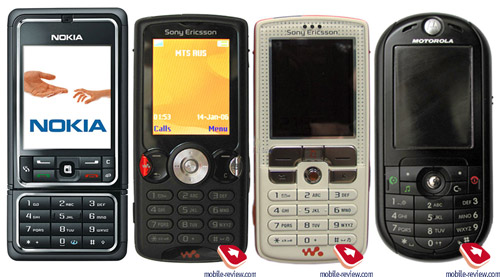
Hardware solutions, operating system, JUIX
About four years ago Motorola started the development of its new concept, and namely they were Linux-based products involving
one of its proprietary versions. Having considered that soon rough competition will start on the market, the company tried to get
apart of all possible rivals. That was clear Nokia's plans focused on Symbian-smartphones, and that is why Motorola staked on
Linux-solutions in contrast. A great advantage of the approach was low price for owing the operating system, a capability to
adjust it as necessary for current hardware solutions. Even more, Microsoft revealed its claims on smartphone market, so supposed
hardware solutions could have easily been transformed for such products. Remember
Motorola Q (Franklin), which based on a typical hardware solution applied for Linux products.
Motorola chose its main goal, which meant creation of a new product line with high functionality and positioning between smartphones and usual phones. Then the company was obliged to develop all applications by own strength, for the platform was closed at first and involved few developers. Thus only after a certain market share was gained, the solution could have become open and form a community of independent developers. And this moment is far ahead.
However users needed a capability to install extra programs, and Java was considered a universal application format then. This is interesting and allows increasing the number of applications, and particularly games. Still the number of Java programs is less than in smartphones (consider serious applications), however there is little need in them on JUIX solutions (JUIX=Java+Linux).
And the main problem that Motorola faced with its first phones was high energy consumption, as phones were dual processor. One of them was responsible for a Linux component (which is actually an interface of an application), and another one deal with network functions. The operating system was not optimized for smartphones, which resulted in low indexes and required a more capacious battery. A typical JUIX product worked about a day in real life, or one and a half day at best. So, the company was afraid that European market won't treat such devices seriously, and that is why they were released only in Asia. Motorola A780 is an example of such a JUIX product, which may be regarded as a representative of the first generation. In fact, support for a touchscreen is no trouble for a JUIX solution.
Having formed a list of improvements, the company proceeded to the second generation. MontaVista programmers were creating a Mobilinux solution to prolong the battery life of these phones. The current version of the kernel is 2.6, which allows one second system boot, work becomes more stable and Event Broker is also improved. The main innovations it involves are Dynamic Power Management (DPM) and MontaVista Power Manager.
By optimization of the Linux kernel, the company achieved longer battery life of current solutions. And after that it is
necessary to make the device use one processor, which will help decreasing the price and battery consumption significantly.
However the second generation devices still use two processors, one of them is Neptune LTE by Freescale (a former Motorola's
department, all its phones are equipped with this processor), which is responsible for connectivity. All other functions are
under the jurisdiction of Intel XScale PXA270, working with the clock rate of 208 MHz. Elder models can provide with other clock
rates, which results in higher operation speed but shorter battery life. However the value of 624 MHz is the highest for this CPU
family, you can read more about these processors on the manufacturer's
site.
Motorola E895, which is a clamshell targeted at American market, represents the second generation of JUIX solutions. This device is equal to ROKR E2 inside, however the form-factors differ. The company planned the release of Motorola E895/E896 for December 2005, however the model have not appeared on the market. It will probably be cancelled or replaced with another device with better characteristics. Representatives of the third generation will appear on the market approximately in the 2Q 2007, and about 6-7 devices of the second generation in various form-factors will have been launched till that time.
Chameleon - the top of the MIG evolution
Now having grasped the hardware and operating system, we can pass to the phone's interface which deserves some words for sure. Motorola hires a special group of developers, which is responsible for making phone's interfaces, their appearance, connection between application and data transfer from one function to another. For about two year the team was engaged in development of a new interface under the code name of Chameleon. This one was to gather all current developments and offer new extra features. A great list of request underlay the new interface. However experience of other companies was considered.
Today two versions of Chameleon exist - the first one is designed for usual phones, and the second version is meant for touchscreen solutions. It is quite clear that recognition of hand writing is added to the second version, and menus are formed differently. At the moment ROKR E2 is the first Chameleon device that we hold in our hands (Motorola A910 and mentioned above Motorola E895 are other representatives of this family). Here we won't describe all interface capabilities, as this would result in plain retelling of an existing review. However I should stress that is a principally another interface, which has no copies among Motorola's mass products. It really is on the level of the best solutions by other makers, or surpasses them sometimes. The basic version has a great potential, and the following interface development promises high results.
Using such an occasion, I'd like to thank all MIG's employees for their great work.
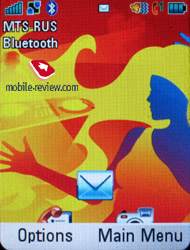 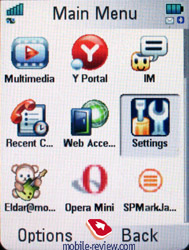
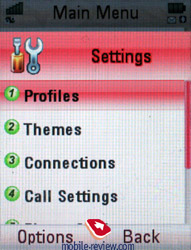 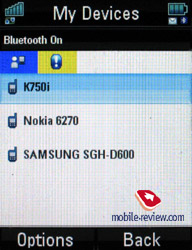
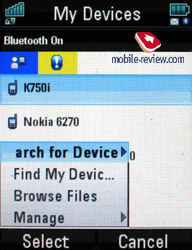 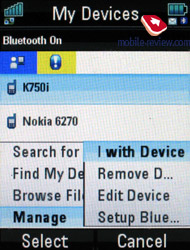
iRadio new style of entertainment
The success of iPod gave birth to entire wave of musical services, and iRadio is one of them. This Motorola's creation is targeted at mobile phones exclusively and represents a kind of symbiosis of an mp3 player and radio. However it is only called radio - a user has a special program on his PC, where he selects six network, Internet radio stations. Broadcasts are saved on a special server and then are coded into a special iRadio format (.ird) and then are transmitted to a user's PC. The new format is necessary for adding not only voice data to the stream but also graphical, text and service content. This is very close to Visual Radio by Nokia, which allows not only transmission of sound, but integration of graphics and text data. The core different is iRadio gets data only from a PC using broadband connection but not through the network. Actually that is a great advantage, as no connection from a mobile phone is required. When huge amounts of data are securely transmitted in 3G networks, iRadio will download data over the air, however now it is impossible. Everything is synchronized with a PC, and files can be stored both on a memory card or internal phone's memory.
A special window containing 6 channels appears on the screen, and you may switch them as you like. As all broadcasts are saved in the phone's memory, you can listen to them even in the tube, when the signal is off. That is really a great step, which provides wide selection of content (475 non-profit-making stations fro the launch moment). And a user needs no search and download of files; the synchronization program would do it all, just plug a cable in and activate synchronization.
An attractive peculiarity is you listen to a broadcast whenever it is convenient to you, also you will never miss an interesting broadcast, as the entire stream is saved on your phone. That means you can download necessary days and go skiing or sunbathing to another country. And all this time you will listen to your radio. The only restriction is memory card capacity. Having broadband connection and a notebook, you can download new content permanently from any place. So, no geographical binding to the radio station.
A Wish List represents strength of the iRadio. Just imagine you suddenly liked some track on the radio, however you do not know the performer. One touch and the song is marked, then the system offers materials close to the marked song during synchronization. Also integration of iRadio with commercial music selling systems is possible, which will help you buying albums of favorite singers and groups. In fact, the development of the Wish List function offers great capabilities.
However iRadio is not a free service - in the USA, where its launch is appointed to April, the price will reach 7.99 USD for a monthly subscription for six channels (remember you can change channels). Launch time for the European market is still uncertain and is most probable for the end of 2006.
You can listen to iRadio not only while walking with a wireless or wire headphones, but in a car as well. A special Bluetooth adapter is released for that purpose. Unfortunately, still the device was not officially announced, however we can suppose the following considering some scanty information. The device adjusts to a special stream transmitted via Bluetooth-channel (A2DP) and then broadcasts it into FM band. You only have to set the frequency on your car player. Own musical records can be transmitted the same way. And many similar solutions are represented on the market; even now you can use them with iRadio phones. There is no difference; even more, some solutions cannot use Bluetooth-connection, but a standard earphones connector.
If Motorola manages to give a right positioning to iRadio, we will see a new step in development of mobile technologies, which is a perfect symbiosis of a phone and a network service. Launch of a similar service is possible for other maker's models and mp3 players in future. Extra data will be limited for the latter, as mp3 players have less powerful screens than phones.
iTunes is a rival for the technology, however here everything deals with music, while iRadio is a special radio broadcast format with music and so on. Visual Radio by Nokia is also very interesting, however requires special broadcast and stations, which number is very little for today. Over the air download of content using this technology is interesting to operators but will "ruin" a subscriber. Concerning iRadio, the operators' interest is also taken into consideration; they receive a part of the customer's monthly fee. And the greatest advantage is the number of independent radio stations even today exceeds a thousand in the USA. They are extremely popular. The forecasts predict spread and success of such radio stations in 2006-2007; they will compete with traditional radio.
And still iRadio Motorola's phones support SCREEN3 technology, which allows accurate setting to news channels, and reception of various data from various sources.
You can see a demo clip about iRadio on the Motorola's site -
http://www.motorola.com/iradio
Extra accessories - with the device for the first
It's an open secret that Motorola always liked to launch various non-standard accessories just after the phone was launched. Their marketing specialists thought it would raise demand on phones. However that never happened in real life and sales of accessories suffered much. A new strategy was applied in 2005; cooperation with famous fashion and technological trade marks was preferred to introduce a new accessory line.
The release of special Oakley glasses with an integrated Bluetooth headset was the first announcement, and a new version supporting stereo sound was announced for ROKR E2 specially, it was called O ROKR. Now the model is associated with the Е2 as the first supporting device, however really it is created for such phones as ROKR E6 and E7.
Points in the specification we would like to emphasize on are four hours of talk or play mode, and up to 100 hours of standby time. Rewind, pause and voice dial buttons are present. The lenses are removable, which allows setting any glass even optical ones. Such glasses will cost you some 500 USD, which is typical of Oakley.
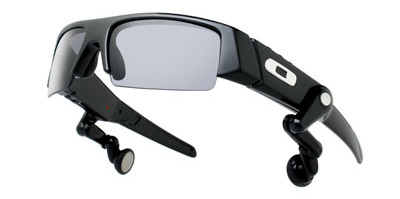
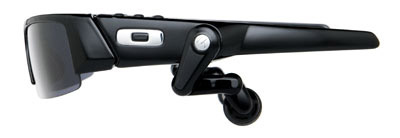

Special loudspeakers, which are joint development with JBL, called JBL On Tour Mobile represent the next accessory. There are a great number of similar examples on the market and the most popular are external reproducers for iPOD. This item may have given birth to a ROKR's accessory. Unfortunately, we have no information about the launch time and price, even no image.
Stereo Bluetooth-headset DJ S805 is designed for people, who will listen to music without wires. The DJ prefix is not accidental, and stresses a musical direction of the product. The headsets advantages cover control keys, rewind and pause buttons. However all the rest is typical for such products.
And finally, many people will probably like a Bluetooth-keyboard, which is compatible with many Motorola's phones (unfortunately, not current models). This usual external QWERTY-keyboard is called TXTR D7, typically of the company. An advantage is Motorola was the first to introduce such a product for usual phones, but not smartphones (Linux phones can't be officially called smartphones).

We won't discuss usual Bluetooth-headsets here; they all copy Jabra's models in some manner. And this company produces them for Motorola against a contract. So, a great point is several very interesting accessories were launched simultaneously with the main product for the first time, whish is untypical of Motorola.
Intermediate totals
Speaking frankly, that is a very seldom occasion when developments of several years are focused in a single product. When it happens, we see either a new stage of technology evolution or a great failure. As for the ROKR E2, amazing number of innovations is concentrated in this phone - it is a representative of the second JUIX generation and the first one of this family positioned in the middle-price segment, the first iRadio phone and the first device equipped with Chameleon. The model is unlikely to fail on markets without operator phones (because operators act against the handset, which threatens other makers' models, and namely, Nokia, as they think). So, only operators' position threatens the ROKR E2, and considering the rest points, the model is doomed to become "the event of the year". This very model allows speaking about mass expansion of Linux devices and Motorola's attempt to return a ruined fame of a trendsetter of technical innovations in mobile phone.
The next part of the review will highlight all ROKR E2's capabilities.
Motorola ROKR E2. Part 2
Eldar Murtazin (eldar@mobile-review.com)
Translated by Maria Mitina (maria.mitina@mobile-review.com)
Published — 30 January 2006
Have something to add?! Write us... eldar@mobile-review.com
|
News:
[ 31-07 16:21 ]Sir Jony Ive: Apple Isn't In It For The Money
[ 31-07 13:34 ]Video: Nokia Designer Interviews
[ 31-07 13:10 ]RIM To Layoff 3,000 More Employees
[ 30-07 20:59 ]Video: iPhone 5 Housing Shown Off
[ 30-07 19:12 ]Android Fortunes Decline In U.S.
[ 25-07 16:18 ]Why Apple Is Suing Samsung?
[ 25-07 15:53 ]A Few Choice Quotes About Apple ... By Samsung
[ 23-07 20:25 ]Russian iOS Hacker Calls It A Day
[ 23-07 17:40 ]Video: It's Still Not Out, But Galaxy Note 10.1 Gets An Ad
[ 19-07 19:10 ]Another Loss For Nokia: $1 Billion Down In Q2
[ 19-07 17:22 ]British Judge Orders Apple To Run Ads Saying Samsung Did Not Copy Them
[ 19-07 16:57 ]iPhone 5 To Feature Nano-SIM Cards
[ 18-07 14:20 ]What The iPad Could Have Looked Like ...
[ 18-07 13:25 ]App Store Hack Is Still Going Strong Despite Apple's Best Efforts
[ 13-07 12:34 ]Infographic: The (Hypothetical) Sale Of RIM
[ 13-07 11:10 ]Video: iPhone Hacker Makes In-App Purchases Free
[ 12-07 19:50 ]iPhone 5 Images Leak Again
[ 12-07 17:51 ]Android Takes 50%+ Of U.S. And Europe
[ 11-07 16:02 ]Apple Involved In 60% Of Patent Suits
[ 11-07 13:14 ]Video: Kindle Fire Gets A Jelly Bean
Subscribe
|













